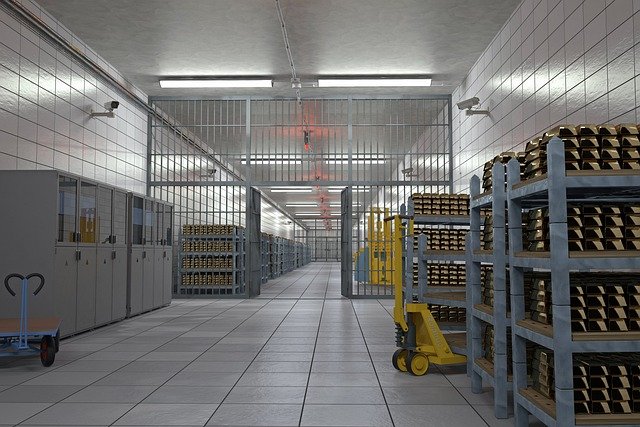Introduction: Why storage decisions matter more than you think
Buying gold or silver is the easy part. Keeping it safe, liquid, and accessible—especially when you’re moving between countries—is where most investors trip up. Storage is not just a logistical choice (“Where do I put this?”). It’s a risk decision that affects your security, insurance, taxes, reporting, buy/sell spreads, and even your ability to exit during a crisis. Choose poorly and you’ll pay through higher fees, illiquidity, or avoidable losses. Choose wisely and your metals will do what they’re supposed to do: hedge risk without becoming a risk.
This guide compares the real-world custody options—home safes, bank safe deposit boxes, private vaults (allocated/unallocated), and dealer programs—through the lens of a mobile or multi-jurisdiction investor. We’ll translate jargon (allocated vs. unallocated, segregated vs. non-segregated), show typical fee structures from major providers, and outline verification and insurance best practices. Where official definitions or rules matter, we cite them.
Key idea: Storage is a stack, not a single choice. Many investors combine 2–3 methods to balance access, cost, and jurisdictional risk.
Storage options overview
Home storage
Immediate access, no ongoing storage fee, and total privacy—home storage is appealing. But it concentrates risk at your residence (or your temporary one), raises insurance questions, and demands you take security seriously (safe specs, bolting, concealment, decoys, alarms, and OPSEC).
Bank safe deposit boxes
Low cost and good physical security, but you’re bound by banking hours and jurisdictional rules. Contents are not insured by the FDIC or the bank, so you’ll need separate coverage if insuring the contents matters to you. Banks can also drill and inventory boxes for non-payment or under certain legal orders.
Private vaults (allocated / unallocated)
Specialist vault operators (e.g., Brink’s, Loomis, Malca-Amit) offer professional bullion storage in key hubs (Zurich, London, Singapore, U.S. depositories). Here you can choose allocated (specific bars in your name) or unallocated (a claim on a pool). Leading vaults typically include all-risk insurance for metals in custody.
Dealer storage programs
Some mints and dealers offer pooled/allocated storage programs (e.g., Perth Mint’s Depository). Fees can be low—sometimes 0% for unallocated—but you must understand the counterparty and legal structure (you may hold an IOU rather than title to specific bars until you convert to allocated/segregated).
Hybrid approaches
Many investors split holdings: a small “home kit” for emergencies, plus the bulk in an insured private vault (often in a different jurisdiction), sometimes with a second vault for geographic diversification.
Not sure between safe-at-home and private vault? Compare security, costs and checklists.
Home storage deep dive
Pros: Immediate access, no ongoing fees, complete control
With a quality safe and smart OPSEC, a modest stash at home serves for emergency liquidity and reduces reliance on third parties. You set the rules: when to audit, when to rebalance, when to sell.
Cons: Theft risk, insurance challenges, no FDIC/SIPC protection
There’s no institutional insurance by default, and standard homeowners policies have low limits (often ~US$1,500) for theft of jewelry/valuables unless you add riders or schedule items. Many policies exclude bullion altogether without specific endorsements—read yours.
Security measures (safes, concealment, diversification)
If you go this route, don’t skimp on the box. Look for tested UL burglary ratings—ideally TL-15 or TL-30 for higher-value storage—and bolt it to structure. Layer with alarms, cameras, and misdirection (decoy safe). Avoid obvious hiding spots.
Safe specifications (fire & burglary ratings, weight)
Fire ratings are nice; burglary ratings are essential. A heavy safe (or one that’s bolted) with a TL rating buys you “attack time” in minutes under test conditions—valuable real-world deterrence.
When home storage makes sense (<$10k holdings)
For small starter positions where third-party fees would dominate, a quality safe + insurance rider may be reasonable. As your stack grows, consider shifting the bulk to professional custody and keeping only an “emergency kit” at home.
Bank safety deposit boxes
Pros: Low cost, strong physical security
Bank vaults are robust and relatively cheap to rent annually. For long-term document storage and some collectibles, SDBs are common.
Cons: Limited access hours, legal quirks, no insurance by default
SDB contents are not FDIC-insured, and most banks don’t insure the contents either—you’ll need private coverage. Miss rent or fall afoul of certain laws and the bank can drill the box, inventory contents, and even send unclaimed property to the state per statute. Also, access may be blocked by closures/holidays or during bank investigations.
Documentation & practicalities
Keep an off-site inventory (not inside the box). If you store metals here, keep dated purchase receipts and photos for provenance and insurance. Understand your rental agreement’s fine print (drilling, escheatment, notice).
When to use (supplementary storage, not primary)
SDBs can complement a broader plan, but relying on them as your only solution introduces access and insurance gaps.
Private vault storage
Allocated vs unallocated explained
Per the LBMA, allocated means specific bars/coins are set aside in your name with a weight list and unique bar numbers; unallocated is a credit claim for a quantity of metal, not tied to specific bars. Allocated gives you title to identified metal; unallocated is cheaper and more flexible, but adds counterparty exposure.
Segregated vs non-segregated
Allocated storage can be segregated (your bars physically separated) or non-segregated/pooled (allocated but stored with like items). Segregation simplifies audits and withdrawals but may cost more.
Major operators & hubs
Global names include Brink’s, Loomis (formerly Via Mat), and Malca-Amit, with facilities in Zurich, London, Singapore, and U.S. depositories (e.g., Delaware/Texas). Leading operators provide all-risk insurance and online inventory reporting.
Costs: setup, annual storage, insurance
Typical ad-valorem fees range ~0.3%–0.7%/year for standard allocated storage, often with minimums. For example:
- BullionStar U.S. lists 0.39%/yr for gold, 0.49%/yr for silver (free first year; in-person audit fee extra).
- IDS Group (U.S./Canada) shows tiered rates 0.65% down to 0.30% with semiannual minimum charges (e.g., $100 per 6 months in Delaware).
- Delaware Depository publishes certain per-bar fees (e.g., US$180/yr for a 100-oz gold bar; US$102/yr for a 1,000-oz silver bar) and higher rates for segregated storage.
Pro tip: Ask explicitly what “insurance” covers (the vault’s liability policy vs. your own rider), and what happens during shipping/withdrawals.
Access procedures & verification
Expect ID checks, appointment requirements, and withdrawal or shipping fees. Reputable vaults provide bar lists, serials, and audit trails; many allow client audits (often paid).
Dealer storage programs
How they work (certificates & accounts)
Mint/dealer programs may offer unallocated or pool-allocated balances with low or no storage fees, sometimes convertible to allocated bars for a fabrication + delivery fee. The Perth Mint Depository is a widely known example with 0% storage for unallocated, and fees for allocated/pool-allocated.
Counterparty risk assessment
Unallocated = a creditor claim on the provider’s balance sheet (you don’t hold specific bars). Read the terms: audit frequency, legal domicile, redemption rules, and whether your claim is off-balance-sheet or not. LBMA and industry papers explain this distinction clearly.
Whichever route you pick, align it with insurance that actually pays.
Liquidity vs ownership concerns & red flags
Unallocated is efficient for trading or small balances, but if title/segregation matters to you, choose allocated/segregated. Red flags: vague audit language, slow or costly conversion to physical, or unclear insurance.
Insurance considerations
What home & bank box insurance really covers
Standard homeowners/renters policies cap valuables at low limits unless you schedule items; bank SDB contents aren’t FDIC-insured and generally not covered by the bank. Consider dedicated valuables riders or specialty policies if you keep metals at home or in a box.
Going heavy on silver? See bulk-storage considerations.
Vault insurance (usually included) vs personal riders
Professional vaults typically include all-risk, full-replacement insurance for custodial holdings (insured via Lloyd’s/London markets), but verify scope and exclusions. Malca-Amit+1
How to document for claims
Maintain purchase invoices, photos, serials, bar lists, and dated statements. Keep copies in your password manager/cloud vault. Ask your insurer what proof they’ll require.
Security protocols
Operational security (OPSEC)
Don’t advertise holdings. Limit who knows, vary routines, and avoid predictable shipment patterns. Separate identity from storage location when possible.
Physical layers
Harden doors/windows, alarms, cameras, and safes (rated). Rotate locations if you’re away for long periods.
Digital security
Protect emailed invoices, vault logins, and statements with a password manager, hardware 2FA, and distinct email aliases.
Trusted party access (estate planning)
Document who can access what (vault contacts, keys, passphrases) and store sealed instructions with your attorney or executor.
International storage for nomads
Benefits: geographic diversification & political risk mitigation
Splitting storage across Switzerland, Singapore, and the U.S. is common: you reduce single-country risk and can sell where liquidity is deepest. Operators in these hubs provide institutional-grade custody and logistics.
Challenges: access, verification, and costs
Travel to collect can be expensive; remote withdrawals incur shipping and handling. Minimum fees can make small balances inefficient. Plan for lead times.
Tax & reporting implications (U.S. persons)
This guide is educational, not tax advice, but two rules of thumb help:
- FBAR/Form 8938 generally cover foreign financial accounts, not precious metals held directly. Safe deposit boxes are typically not “accounts”—but nuances exist if a financial institution can access/dispose of the contents under arrangement. Always confirm with a professional.
- Storing in Singapore can avoid GST for qualifying Investment Precious Metals (IPM) (gold ≥99.5% purity, silver ≥99.9%, platinum ≥99%), improving total cost of ownership. The EU similarly exempts qualifying investment gold from VAT.
Cost comparison table
Illustrative numbers using publicly posted examples; confirm current rates before deciding.
| Option | How fees are charged | Example fee assumptions | Pros | Cons |
|---|---|---|---|---|
| Home safe + rider | One-time safe + annual insurance rider | TL-rated safe US$1,800 + install; rider +US$150/yr (varies) | Immediate access, privacy | Theft risk on you; rider limits/exclusions; no institutional cover |
| Bank SDB | Flat annual box rent | US$80–$200/yr typical | Low cost, strong vault | No FDIC/bank insurance; access limits; drilling/Escheat risk |
| Private vault (allocated) | % of value + minimums | 0.39%/yr (gold) at BullionStar U.S.; or 0.65%→0.30% tiers at IDS (+$200/yr min in Delaware) | Professional custody, all-risk insurance, global hubs | Ongoing fees; withdrawal/shipping charges |
| Dealer program (unallocated) | 0%–low %, conversion fees later | Perth Mint 0% storage for unallocated; fees if converting to allocated | Cost-efficient exposure, easy scaling | Counterparty/IOU risk until allocated; fabrication fees on conversion perthmint.com |
10-year total cost example (illustrative)
- $50,000 in gold:
- Private vault @ 0.39% = ~$195/yr → $1,950 over 10 yrs (ex-withdrawal costs).
- IDS tier @ 0.65% but $200/yr minimum → $2,000 minimum if value low, otherwise $3,250 over 10 yrs at 0.65%.
- Home safe + $150/yr rider + $1,800 safe = $3,300 total over 10 yrs (ex-burglary risk).
- Dealer unallocated = $0 storage, but budget for future conversion + fabrication + delivery if you’ll take possession.
Decision lever: for smaller stacks, minimum fees matter more; for larger stacks, % fees dominate—shop tiers.
Choosing the right option for your situation
Decision tree (quick version)
- Do you need same-day access?
Yes → Keep a small home kit + local SDB; bulk in a vault.
No → Professional allocated vault in a stable jurisdiction. - Is title to specific bars important?
Yes → Allocated/segregated vault.
No/Trading focus → Unallocated/pool-allocated can be efficient (know the caveats). - Do you move countries often?
Yes → Favor Zurich/Singapore/U.S. depository mix and avoid storage that requires you to be physically present for routine actions.
Verification and auditing
How to verify allocated storage
Ask for a weight list with serial numbers and fineness; reconcile to monthly statements. The allocated definition requires specific bar identification—accept nothing less.
Annual audit procedures
Third-party audits, client inspections (some vaults allow in-person audits for a fee), and photographed seal checks create a strong trail. Keep signed audit attestations with your records.
Red flags indicating problems
Vague ownership language, “pooled” without clarity, slow delivery, or refusal to provide bar lists. If you can’t get a straight answer on title and insurance scope, walk away.
International storage for nomads: top jurisdictions at a glance
| Jurisdiction | Why investors use it | Notes |
|---|---|---|
| Switzerland (Zurich/Geneva) | Deep liquidity, long tradition, top-tier operators (Brink’s, Loomis) | Multiple vaults at/near airports; strong private custody culture. |
| Singapore | Political stability, GST exemption for qualifying IPM, world-class Freeport | Know purity rules (Au 99.5%, Ag 99.9%, Pt 99%); many reputable dealers/vaults. |
| United States (Delaware/Texas/Wyoming) | Mature depositories (Delaware Depository, IDS, BullionStar US), strong logistics | Clear fee schedules; check state sales tax rules on retail purchases. |
| United Kingdom (London) | Global gold market nexus; LBMA ecosystem | Brexit considerations for cross-border shipping; still a major hub. |
Best practices (regardless of option)
- Separate “emergency kit” from core holdings.
- Document everything: invoices, serials, photos, audits.
- Test withdrawals annually (or do a small test shipment/pickup).
- Secure digital records (password manager + hardware keys).
- Plan heirs’ access (sealed instructions, trusted attorney).
- Know your tax/reporting duties for your citizenship/residency.
Vault provider directory (starter list)
- Brink’s Global Services — global vaulting incl. Switzerland; full liability for stock held.
- Loomis International (ex-Via Mat) — vaults in major financial centers; storage + customs.
- Malca-Amit — Free Trade Zone vaults in Singapore/London with Lloyd’s-backed liability.
- International Depository Services (IDS) — U.S./Canada; tiered fees + minimums.
- Delaware Depository — published per-bar fees; widely used by IRAs/dealers.
- BullionStar (Singapore/US/NZ) — retail + vault with transparent fee schedule.
(We don’t endorse providers; verify directly and compare contracts.)
Common fears—fact-checked
- “If my bank fails, the SDB protects me.” SDB contents aren’t FDIC-insured; treat them like un-insured valuables, not insured deposits.
- “Unallocated is the same as allocated.” No—allocated = specific bars in your name; unallocated = a credit claim. Different risk and legal treatment.
- “Vault insurance covers everything, everywhere.” Policies vary; ask for the certificate wording and limits. Many cover custody, not transit (unless arranged).
Your storage decision checklist
Before you move (or expand) your stack, run this list:
- Purpose fit: Am I optimizing for access, cost, or jurisdictional diversification?
- Title clarity: Do I hold allocated metal with serials, or an unallocated claim? LBMA
- Insurance proof: Whose policy, what limits, and which events are covered? Brink’s Global Services
- Fee math: % vs minimums—what’s my 10-year TCO at today’s value? BullionStar U.S.+1
- Access plan: How quickly can I collect or sell from my current location?
- Compliance: Do my choices affect FBAR/8938 (for U.S. persons) or VAT/GST? Servicio de Impuestos Internos+1
- Redundancy: Do I have a second site or provider if the first becomes unavailable?
Nail those seven points and your metals will do their job—protect—without hijacking your time or peace of mind.
FAQs
Is it safe to keep bullion at home?
It can be for small amounts if you invest in a rated safe (TL-15/TL-30), bolt it, and keep quiet. Insure it properly and reassess as your holdings grow.
Are bank safe deposit boxes insured?
No. The contents are not FDIC-insured, and the bank generally doesn’t insure them either. Consider separate coverage.
What’s the real difference between allocated and unallocated?
Allocated = title to specific bars with serials. Unallocated = a claim on a pool (more like an IOU). Fees are lower for unallocated, but risk is higher.
Which jurisdiction is “best”?
There isn’t a universal best. Switzerland (depth/tradition), Singapore (IPM GST exemption), and U.S. depositories (access/logistics) are popular anchors. Many investors use two hubs.
Do I have to report foreign vault holdings to the IRS? (U.S. persons)
Directly held metals are generally not reportable on FBAR/Form 8938, but foreign financial accounts are—and there are nuances for arrangements where an institution can access/dispose of your box. Ask a qualified tax professional.



